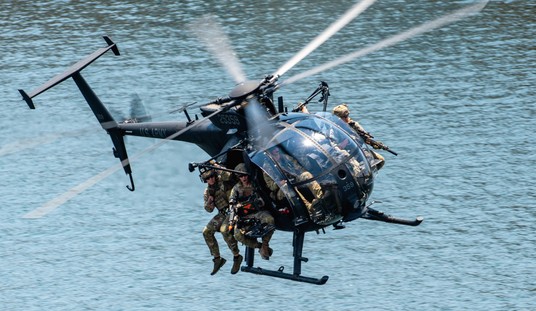Ukraine and Russia have been at war, off and on, since 2014, but you would hardly know that if your only information sources were the legacy media. Like most wars, this one was about economics – with a dose of factionalism thrown in for good measure. Ukraine was the “breadbasket of the Soviet Union” until it declared its independence after the fall of the USSR in 1991. Although politically and economically dominated by the USSR for decades, the official language is Ukrainian with ethnic Russians concentrated mostly in the eastern part of the country near the border area.
In early 2014, the Russian military occupied Ukraine’s Crimean Peninsula in order to stop Ukraine from developing the Crimea’s natural gas reserves in conjunction with US companies. The pretext was to supposedly maintain Russia’s access to the Black Sea, but Russia’s Gazprom would have lost one of its biggest customers if the Ukrainian gas fields had been developed with US help. The Russians subsequently annexed Crimea and later invaded eastern Ukraine on the pretext of supporting indigenous separatist factions who wanted to break away and re-join Russia.
Here is the current state of affairs, including where the US enters the equation:
The conflict in eastern Ukraine has transitioned to a stalemate after it first erupted in early 2014, but shelling and skirmishes still occur regularly, including an escalation in violence in the spring of 2018.
Since taking office, the Donald J. Trump administration has continued to pressure Russia over its involvement eastern Ukraine. In January 2018, the United States imposed new sanctions on twenty-one individuals and nine companies linked to the conflict. In March 2018, the State Department approved the sale of anti-tank weapons to Ukraine, the first sale of lethal weaponry since the conflict began, and in July 2018 the Department of Defense announced an additional $200 million in defensive aid to Ukraine, bringing the total amount of aid provided since 2014 to $1 billion.
Ukraine’s new president, Volodymyr Zelenskiy, campaigned on resolving the conflict (as well as on eliminating the rampant corruption in his country) and has been trying to negotiate a deal with Vladimir Putin to end the war. The probability is low that an end to the war/stalemate will be concluded on anything other that Russian terms, but stranger things have happened, particularly if the Ukraine military continued to be reinforced with US/Western military equipment and technology.
There was a pretty decent article in Military Times in which the new Ukrainian ambassador explained what his country needs, as well as what has been effective in stalemating the Russians. You won’t be surprised to learn that the Javelin anti-tank missiles that President Trump has provided (and which the craven Obama refused to provide) have had a major impact. Here are some excerpts:
Volodymyr Yelchenko, the Ukrainian ambassador to the United States, said there are many reasons the U.S. should care about the conflict in Ukraine.
There are “plenty of military lessons” for the U.S. in Ukraine, which is now into its sixth year of a Russian invasion that has cost more than 14.000 Ukrainian lives and displaced millions, Yelchenko said in an exclusive interview with Military Times during a break in Thursday’s “US-Ukraine Security Dialogue XI” held at the National Press Club in Washington. “This is real war going on in the middle of Europe and this experience is different from Syria or Afghanistan or Iraq, so this is probably something which the U.S. military doesn’t have experience with.”
Ukraine wants “even smaller things “ like more Javelin anti-tank weapons, sniper rifles and grenade launchers, said Yelchenko. The weapons were among the long-sought-after lethal aid finally delivered by the Trump administration. “All of this is very effective on the front lines,” he said.
The Javelins “were a game-changer” when they first came on line for the Ukrainians in 2018, said Chaly, forcing Russian tanks to back off to avoid being blown up.
[Michael] Carpenter, the former [deputy assistant defense secretary responsible for Russia, Ukraine, Eurasia and the Baltics] who now serves as the Senior Director of the Penn Biden Center for Diplomacy and Global Engagement, offered up a long list of weapons systems Ukraine needs. Everything from mobile air defense systems like shoulder-fired missiles to increased naval capabilities.
“They also need naval capabilities because the Ukrainian littoral is practically undefended,” he said. “So that means small craft, and maneuverable tactical boats that have some sort of anti-ship capabilities. Not necessarily medium- or long-range but short-range, and a coastal sort of defense system to include … radars, and then also ground-based anti-ship missiles. “
Part of the US Dept of Defense’s budget includes funds for “Overseas Contingency Operations (OCO),” which have been funded at up to ~$65 billion per year.
The Overseas Contingency Operations (OCO) fund – sometimes referred to as war funds – is a separate pot of funding operated by the Department of Defense and the State Department, in addition to their “base” budgets (i.e., their regular peacetime budgets). Originally used to finance the Iraq and Afghanistan wars, the OCO continues to be a source of funding for the Pentagon, with a fraction of the funds going to the State Department.
There is a special part of the OCO funding, called the European Defense Initiative (EDI) that is focused on reinforcing allies in Europe and deterring Russian aggression. Included in the EDI was the $250 million that Congress authorized for the Ukraine Security Assistance Initiative, which can be used to replace any “weapons or defensive articles” provided to Ukraine by the US. These were the funds that the Democrats caterwauled about during their impeachment farce.
Just last week, additional DoD military assistance to Ukraine was announced, as reported here:
Members of Congress have been informally notified of the Defense Department’s plans to provide $125 million in new military assistance to Ukraine, including armed patrol boats, according to a congressional aide and US official.
The chairs and ranking members of the relevant congressional committees will have a chance to review the aid packages before Congress is formally notified.
This is the first half of the $250 million in Ukraine Security Assistance that has been appropriated by Congress.
The new assistance package includes counter-artillery radars and armed Mark VI patrol boats, the latter of which is seen as particularly important given Ukraine’s tensions with Russia in the Black Sea and the Sea of Azov.
Exactly what the Ukrainian ambassador said his country needed. It should be repeated again and again that the Trump Administration is actually providing lethal military aid and equipment to the Ukrainians whereas the Obama regime – in kowtowing to Moscow – only provided nonlethal military assistance to Ukraine. I would argue that if anyone was “in Putin’s pocket,” it was Obama not President Trump! More lethal military aid to Ukraine should give President Zelensky some leverage as he discusses ending the war with Putin.
Lastly, Zelensky is continuing to make good on his promise to clean up the corruption in his government, as he swapped out nearly his entire cabinet last week, getting rid of holdovers from the corrupt Poroshenko regime. Looks like Zelensky is another nonpolitician leader who keeps his promises.
The end.













Join the conversation as a VIP Member